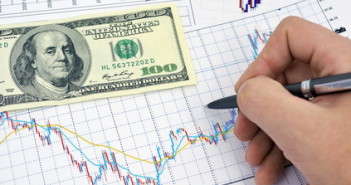Elliot Wave Theory was developed by Ralph Elliot in the 1930’s and is still a popular strategy that is used by forex traders today. The basis of the theory relies on the idea that market events form the same patterns that can be found amongst nature, and as such it is closely related to the Fibonacci sequence.
The Elliot Wave Theory proposes a five wave pattern of alternating waves of growth and contractions called ‘impulses and corrections’. In up markets, there is a sequence of three impulses separated by two corrections, while in down markets the sequence is for three corrections and two impulses – as prices shrink.
A Guest Post by FXTM
Predicting the market
The key to successfully predicting the market then, is to be able to identify which wave the market is currently in and then placing a trade in the anticipated direction. To assist with this, it is possible to draw Elliot Wave phases and Fibonacci retracements into most price charts. Elliot also provides nine different categories of waves which can be used to better drill down into the correct market phase.
The first of these is the main wave, called the Supercycle and it is this wave that will often last over several months as the market’s main price direction. The Supercycle also has several corrective waves, however, it is wave three that is the most powerful wave.
It is during wave 3 that the market experiences its biggest upward or downward move and this is the time when most traders will join the market. Unfortunately, this is the worst possible time for investors to enter as purchasing here greatly reduces their profit margin and usually comes near the top of the wave.
Fibonacci sequence similarities
Although Elliot designed his wave theory before he had even heard of the Fibonacci sequence, it is interesting that there are many similarities between the two ideas.
Indeed, the Fibonacci sequence of 1, 1, 2, 3, 5, 8, 13, 21, 34, 55, 89, 144 and on to infinity, proposes the same laws that shape the natural world including plants and galaxies that Elliot Wave theory seeks.
And, like the Elliot Wave, Fibonacci theory suggests wave cycles of a 1,3,5 structure with a full cycle of 8 waves. Completed moves are given an 89 wave structure and corrective patterns take on a 55 wave pattern.
Interestingly, the Elliot Wave and Fibonacci sequence also identify similar percentage figures for identifying retracements. Both theories indicate a 78.6% retracement as the best place to buy a market in a continuing upward trend and it is this position that offers the best risk/reward ratio to traders.
Further reading: 5 most predictable currency pairs
